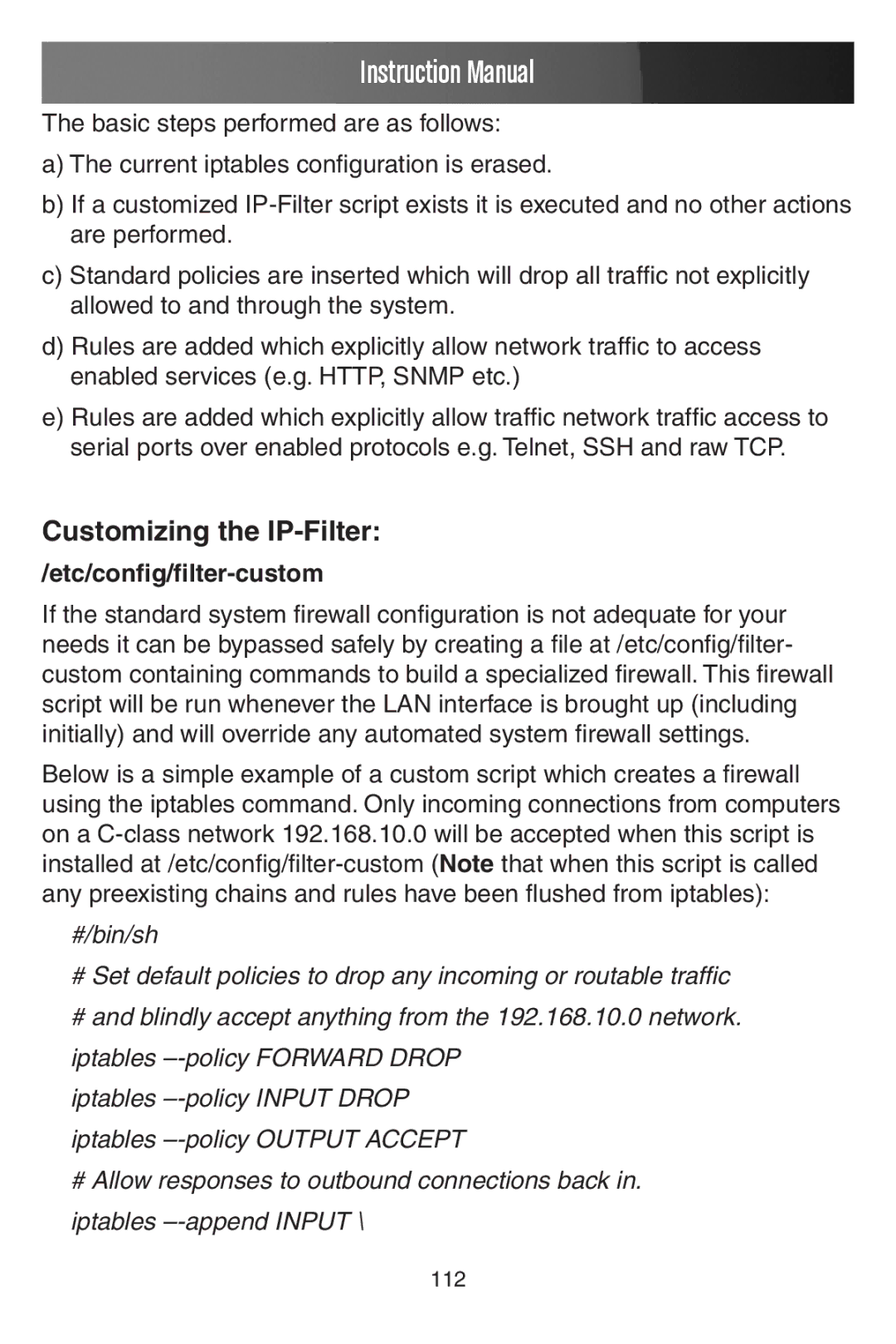Instruction Manual
The basic steps performed are as follows:
a)The current iptables configuration is erased.
b)If a customized
c)Standard policies are inserted which will drop all traffic not explicitly allowed to and through the system.
d)Rules are added which explicitly allow network traffic to access enabled services (e.g. HTTP, SNMP etc.)
e)Rules are added which explicitly allow traffic network traffic access to serial ports over enabled protocols e.g. Telnet, SSH and raw TCP.
Customizing the IP-Filter:
/etc/config/filter-custom
If the standard system firewall configuration is not adequate for your needs it can be bypassed safely by creating a file at /etc/config/filter- custom containing commands to build a specialized firewall. This firewall script will be run whenever the LAN interface is brought up (including initially) and will override any automated system firewall settings.
Below is a simple example of a custom script which creates a firewall using the iptables command. Only incoming connections from computers on a
#/bin/sh
#Set default policies to drop any incoming or routable traffic
#and blindly accept anything from the 192.168.10.0 network. iptables
iptables
#Allow responses to outbound connections back in.
iptables
112
